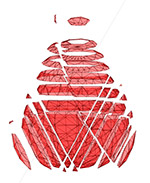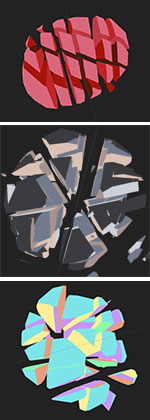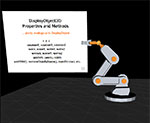19 Jan 2009
As we are now in the year 2009, for some reason you feel like there ought to be a way to take your cool shit, send it over the wire and get it back again, without having to resort to 99 searches on Google, a trip to Barnes & Noble for a stack of books with ugly green covers and stupid illustrations of birds and salamanders, and a spare weekend you'd be doing nothing better with anyway.
Your cool shit's in Flash, and it's not just text data, presumably, so by a process of elimination we conclude that your shit -- not of a lukewarm nature by any means -- is most appropriately represented by a series of ones and zeros -- in binary format. And that you want to get it on the database. 'Cuz you can't create the next viral sensation if you can't get your cool shit to the database, now can you?
Read more
21 Dec 2008
Sooner than expected, this version covers bullet-point 2 of the previous post:
Adding extra faces to the cut-up meshes to make them closed shapes again would make the whole thing feel more “physical” and less abstract-graphics-demoey...
Adobe's Kuler service is being used to generate the color scheme, which I find quite exciting. Because it saves this particular demo from a world of red and black -- which are basically the only colors I use when left to my own devices. (Press [C] to cycle through colors) Thanks to Aden Forshaw for the AS3/Kuler example.
Finally worth noting is that the 'physics' have improved a little. I was previously using vertex count as a proxy for mass. Using the bounding box volume ended up being a better way of faking it.
19 Dec 2008

Click to run demo
A demonstration of splitting a mesh in two along an arbitrary plane. With some faux-physics for added value. I was thinking about the 'laser room scene' in Resident Evil.
This minimal example shows how to cut up the faces of a mesh along a plane:
PlaneSplitMinimalExample.as | Run it
Read more
19 Jun 2008
This is a slideshow viewer, utilizing the robot arm from this previous post done with Papervision 3D. I created it on the occasion of a presentation I'm preparing for the Flash user group, San Flashcisco. In typical fashion, I spent more time creating the slideshow program than preparing the presentation itself, or the slides for it.
Hotkeys:
[SPACE/BACKSPACE] Next/previous slide
[BRACKET KEYS] Next/previous slide without transition
[COMMA] Zoom in and out of slide, for the fun of it
Also: [1/Q, 2/W, 3/E, 4/R, 5/T, 6/Y, and 7/U] - Rotate joints
[Z,X,C,V] - Moves robot arm to various keyframes/poses
Run it from the desktop, with your own images:
Read more
18 May 2008

Click to run demo
Recently I've been thinking on ways of programmatically creating curvy, organic-looking shapes in 3D.
High-level recipe:
- Start with a cylinder or sphere-shaped mesh, where the vertices are evenly spaced . The vertices of the mesh can be thought of as a matrix or grid, where the left and right edges are curved 360 degrees until they meet.
- Take an interesting bitmap with varying light and dark areas, whose height and width match the number of rows and columns in the mesh.
- Use brightness (or some other color-derived property) from the pixels of the bitmap as a multiplier value to dictate the distance of the corresponding vertices from the z-axis (center) of the shape.
Read more


 Click to run demo
Click to run demo
 Click to run demo
Click to run demo

 Click to run demo
Click to run demo